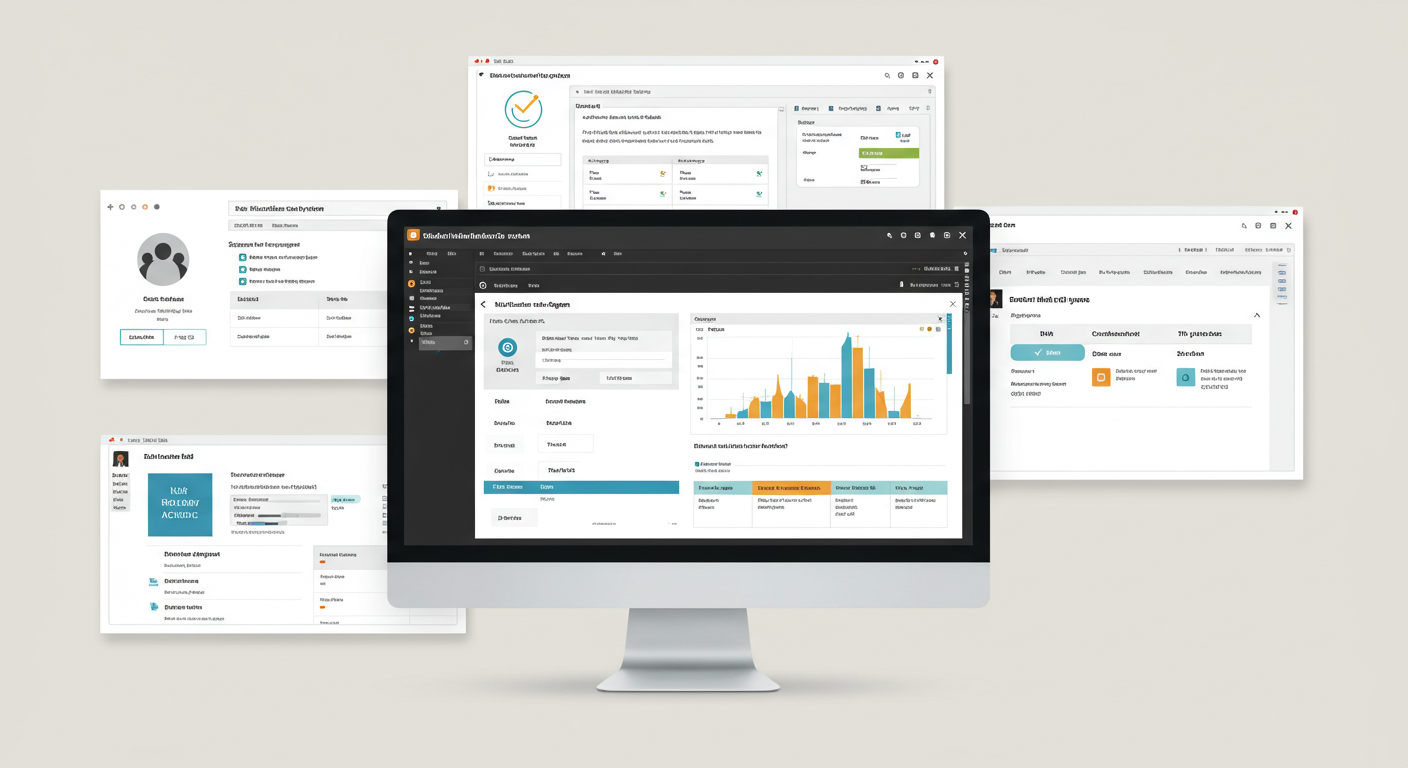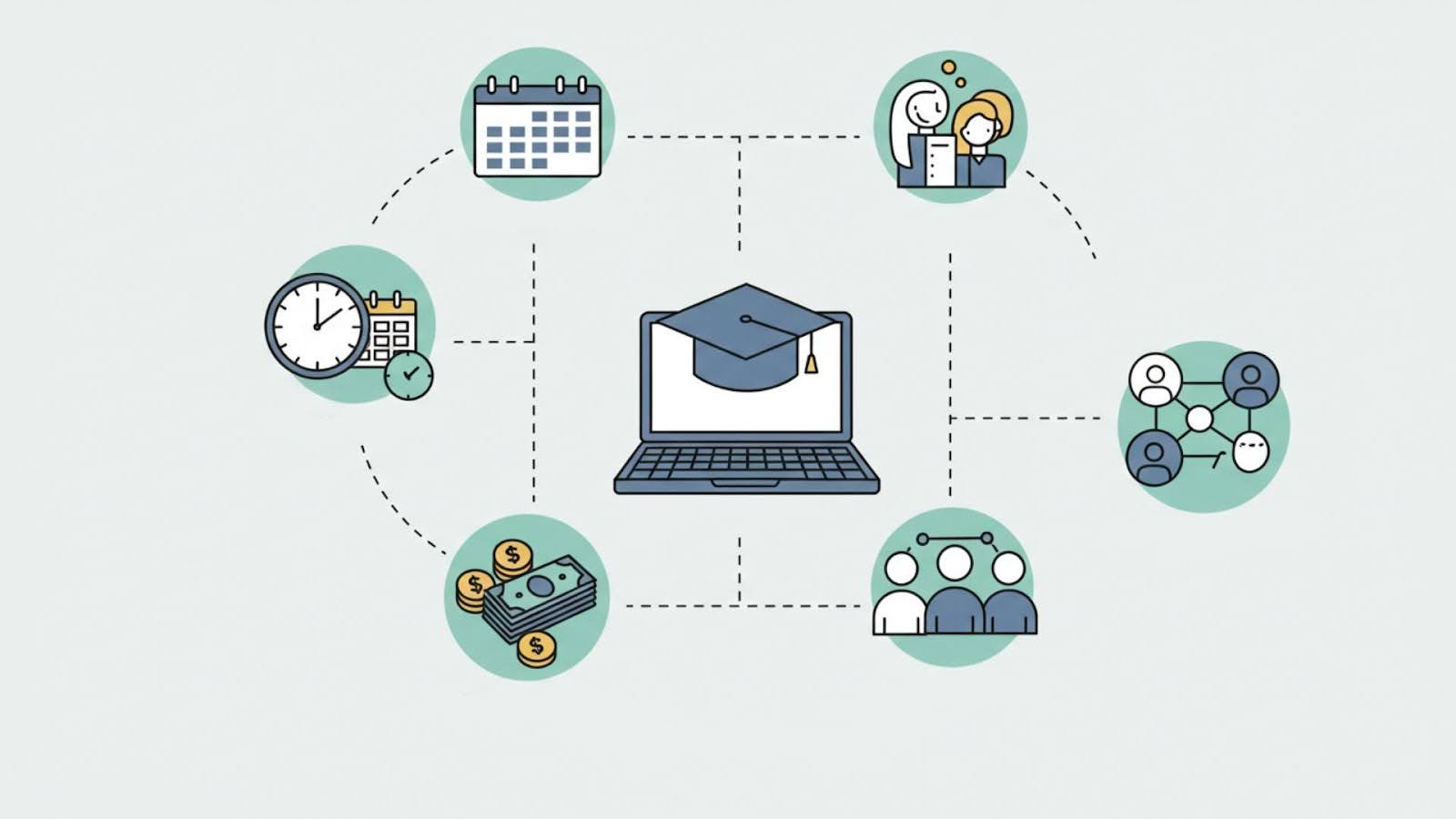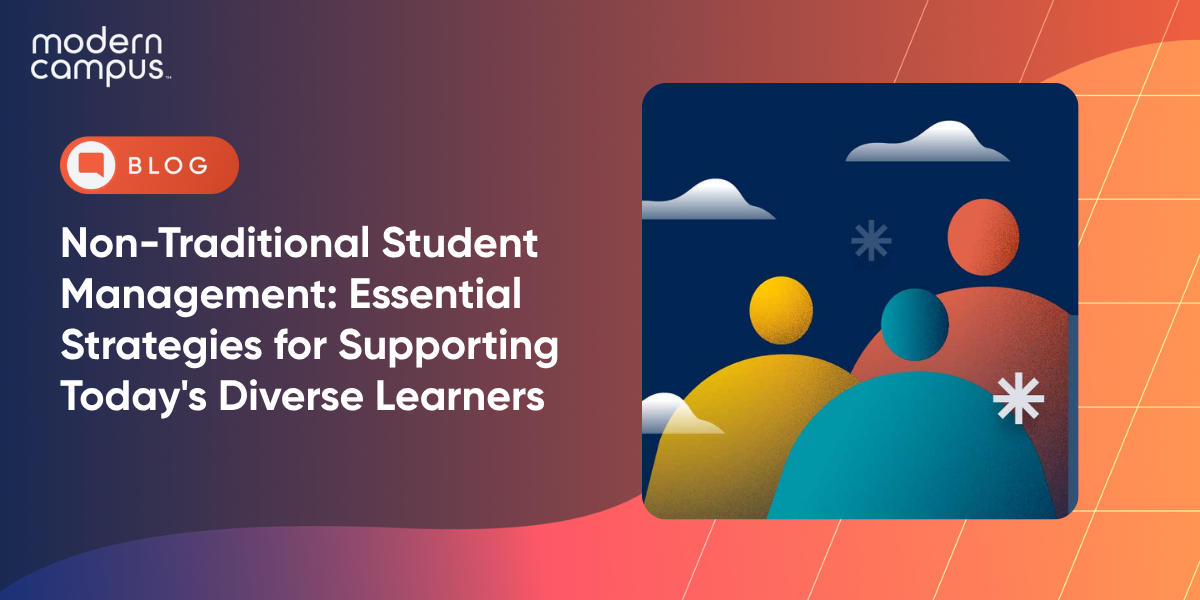Non-Traditional Student Management: Essential Strategies for Supporting Today's Diverse Learners
Higher education is experiencing a seismic shift that many institutions are still struggling to address. The traditional 18–22-year-old student walking directly from high school graduation to campus dormitories is no longer the norm. The U.S. Department of Education estimates that 73% of undergraduates have one or more non-traditional characteristics, fundamentally reshaping the landscape of higher education. These learners bring work experience, family responsibilities and specific career goals that require entirely different approaches to education and student management.
As institutions face the looming demographic cliff beginning in 2025, with traditional college-age populations expected to decline by 13% over the next 15 years, effectively serving non-traditional students is essential for institutional survival. Those who master non-traditional student management will thrive; those who don't will struggle to maintain enrollment and relevance.
What is a Traditional Undergraduate Student?
A traditional undergraduate student is typically defined as someone between the ages of 18 and 24 who first enrolled in their college or university immediately after graduating high school or after a planned "gap year". Current data shows that 61.7% of undergraduates are enrolled full-time, typically defined as taking at least 12 credits per term.
However, this demographic is shrinking rapidly. Enrollment data shows that students aged 18–20 comprise only 40% of all college undergraduates, while the percentage of students over 25 continues to grow. This shift demands that institutions rethink their programming and their entire approach to student services and management systems.
What is a Non-Traditional Undergraduate Student?
Non-traditional undergraduate students, sometimes called post-traditional students, may deviate from their traditional counterparts in multiple ways beyond just age. Even a learner aged 18 to 24 may be considered non-traditional by certain researchers, accreditors or institutions if they meet at least one of the following criteria:
- They delayed enrollment in postsecondary education by more than a year after completing high school
- They have dependents other than a spouse (including children, elderly parents, siblings or other family members for whom the student is financially responsible)
- They work full-time while enrolled
- They are part-time students taking fewer than 12 courses per term
- They earned a GED or high school certificate of completion rather than a diploma
The reality is that these characteristics are becoming increasingly common. Non-traditional students face distinct barriers, including inflexible schedules, inadequate financial support and lack of tailored services. These challenges are difficult, if not impossible, for traditional student management systems to address.
What is a Non-Traditional, Non-Degree-Pursuing Student?
"Non-traditional" covers an even wider range of students beyond undergraduate programs. The term frequently describes students enrolled in programs focused on skill development, career advancement or personal enrichment, including lifelong learners in:
- Continuing education courses, workshops or seminars designed for professionals looking to upskill or reskill in their current field or transition to new careers
- Professional development programs offering certifications, licensures or specialized training to improve job performance or advance careers
- Executive education programs targeted to mid-career professionals, executives and managers seeking to enhance leadership skills and business acumen
- Workforce development programs focusing on in-demand skills or industries, often including collaborations with employers to ensure curriculum relevance
Although these programs typically don't offer standard degrees, many award alternative credentials including certificates and microcredentials that are increasingly valued by employers.
Non-Traditional Student Management: Technology and Systems That Work
Effective non-traditional student management requires purpose-built systems that can handle the complexity and diversity of modern learners. Traditional student information systems, designed for linear degree progression and residential campus life, fall short when managing students who may be simultaneously enrolled in multiple programs, attending part-time or balancing education with full-time work and family responsibilities.

Modern non-traditional student information systems must offer flexible enrollment cycles, support for asynchronous learning and integration capabilities that connect continuing education, workforce development and traditional degree programs. These platforms need to accommodate varied course structures, modular programs and self-paced learning while providing robust tracking for student progress across multiple credentials and timeframes.
The most effective non-traditional student management approaches leverage automation to streamline enrollment workflows, reduce administrative burden and create seamless experiences that meet adult learners' expectations for efficiency.
Universities like the University of Toronto's OISE have found that non-traditional students "want to be able to self-serve, to shop a bit to determine what they're looking for," requiring systems that can remember student information and provide quick, easy registration processes.
These systems must connect with existing Student Information Systems (SIS) and Enterprise Resource Planning (ERP) platforms while maintaining data consistency across all programs. This unified approach ensures that whether a student is pursuing a degree, professional certification or workforce training, their experience feels cohesive and their progress is properly tracked.
Demographics: The New Majority in Higher Education
Today's higher education demographics paint a clear picture of transformation. According to comprehensive data analysis, current college student demographics include:
- 34% are age 25 or older
- 46% are first-generation college attendees
- 64% work while enrolled (40% work full-time, 24% part-time)
- 49% are financially independent from their parents
- 24% have children or other dependents
- 9% are first-generation immigrants
- 6% are active military or veterans

These statistics demonstrate that the lines between traditional and non-traditional students have become increasingly blurred. Some institutions categorize students purely by age, while others consider financial independence, work obligations and family responsibilities among other factors.
The financial pressures facing these students are particularly acute. Recent research shows that 76% of students say financial aid amount and process affected their school choice more than any other factor, while nearly 60% considered dropping out due to financial stress, with 19% actually leaving primarily due to financial uncertainty.
Traditional vs. Non-Traditional Students: Key Differences
Life Stage and Perspective
Traditional and non-traditional students typically operate at different stages of personal development. Traditional students transitioning from high school are navigating early adulthood, while older students bring established perspectives, worldviews and values shaped by life experience.
Motivation and Goals
Traditional students often seek knowledge, career preparation and personal growth through exploration. A survey of American students aged 16–22 found that 73% believe they have a clear career vision, yet 51% remain unsure of their next educational steps.
Non-traditional students typically have precise educational journeys in mind. Their primary motivation is career advancement or change. They know exactly which skills and knowledge they need and understand how higher education will help them achieve specific goals. Simply put, traditional students view college as exploration time, while non-traditional learners see it as the most direct pathway to established objectives.
Responsibilities and Availability
Non-traditional students juggle multiple responsibilities beyond academics, including work, family and community commitments. These obligations impact their availability for traditional class schedules, office hours, co-curricular activities and campus support systems.
Younger students typically have more flexibility for non-classroom engagement. They may view student organizations and faculty relationships as integral parts of the college experience, and their residential or near-campus living situations facilitate participation.
Learning Preferences
Students with professional experience often prefer practical, applied learning that draws on real-world experience. They favor hands-on learning, case studies and problem-based approaches over traditional lectures. Many are inclined toward self-directed learning, taking responsibility for their educational process and seeking resources aligned with their goals.
Traditional students may be more comfortable with conventional academic formats, excited by theoretical concepts and broad ideas rather than career-specific training.
7 Essential Features for Managing Non-Traditional Students
Effective non-traditional student management requires specific capabilities that address the unique needs of adult learners. Here are the critical features every institution should prioritize:
1. Flexible Enrollment and Registration Systems
Enable students to enroll in courses across multiple terms, register for individual classes without degree requirements and easily modify their schedules. Shopping cart functionality that allows students to save their selections and return later has proven to increase completion rates significantly.
2. Automated Administrative Workflows
Streamline time-consuming tasks like enrollment processing, payment collection and record management. Automation reduces staff workload while providing the immediate responses that working adults expect from their educational experiences.
3. Multi-Program Integration Capabilities
Support students who may be simultaneously enrolled in degree programs, professional certifications and continuing education courses. Systems should seamlessly track progress across all programs and provide unified transcripts and records.
4. Self-Service Student Portals
Provide 24/7 access to course registration, grade checking, payment processing and academic planning tools. Non-traditional students often manage their education outside traditional business hours and need constant access to essential services.
5. Personalized Communication and Marketing Tools
Enable targeted outreach based on student demographics, interests and enrollment history. Data-driven personalization helps institutions deliver relevant program recommendations and support resources.
6. Flexible Payment and Financial Aid Processing
Accommodate diverse financial situations with payment plans, corporate billing options and streamlined financial aid processes designed for working adults who may not fit traditional aid models.
7. Comprehensive Progress Tracking and Analytics
Monitor student engagement, completion rates and success patterns across all program types to identify at-risk students early and optimize support interventions.

Retention Strategies Through Better Student Management
Effective non-traditional student management directly impacts retention rates. Recent data shows that student persistence and retention rates have rebounded to pre-pandemic levels at 76.5%, but institutions serving high percentages of non-traditional students often see different patterns.
The key to retention lies in early identification and intervention. Modern retention strategies focus on tracking both academic milestones and on-track indicators that signal student engagement and progress. For non-traditional students, this includes monitoring course completion patterns, participation in online discussions and utilization of support services.
Technology plays a role in scaling personalized retention efforts. Automated early warning systems can flag students showing concerning patterns, such as missed deadlines, declining participation or irregular login patterns, and trigger appropriate interventions. This might include personalized outreach from advisors, connection to financial aid resources or referrals to academic support services.
Text messaging has emerged as particularly effective for maintaining connection with non-traditional students, providing timely reminders about deadlines, encouraging messages during challenging periods, and quick access to support resources. The immediacy and ubiquity of text communication align perfectly with the busy lives of working adult learners.
How Institutions Can Support Traditional and Non-Traditional Students
Supporting Traditional Students
Traditional students benefit most from academic advising, mentorship programs and career coaching that help them navigate academic pathways and explore career options. Student engagement through co-curricular activities proves crucial. Students who participate in organizations and events show higher connection to institutions, better GPAs and improved persistence through graduation.
Supporting Non-Traditional Students
Non-traditional students require flexible learning options, including online courses, evening classes and accelerated programs to accommodate busy schedules. Institutions should consider offering on-campus childcare services or partnerships with local providers to expand accessibility.
Since non-traditional students often focus on specific career trajectories, offering courses related to practical skills and knowledge supports retention. Learning assessment programs that award college credit for work experience and non-traditional learning can accelerate their progress.
Technology becomes essential for ensuring non-traditional students, including commuters and online learners, can easily access campus resources like libraries, technology support and academic services. Supporting non-traditional learners through technology requires addressing varying levels of tech literacy while providing comprehensive support resources.
Universal Best Practices
Both student populations benefit from clear communication about expectations, transparent pathways to graduation and robust support systems. However, the delivery methods and timing must be adapted to meet each group's unique needs and availability patterns.
Financial support remains crucial across all demographics. With financial stress affecting the majority of students, institutions must provide clear information about aid options, flexible payment plans and emergency financial assistance programs.
Frequently Asked Questions
Q: What are the biggest challenges in managing non-traditional students?
A: The primary challenges include accommodating flexible scheduling needs, managing complex enrollment patterns across multiple programs, providing adequate support for students balancing work and family responsibilities and ensuring technology systems can handle diverse learning pathways.
Q: How do retention rates differ between traditional and non-traditional students?
A: Non-traditional students often face higher dropout risks due to competing responsibilities, but they also demonstrate stronger completion rates when provided with appropriate support systems and flexible program options that align with their goals.
Q: What technology features are most important for non-traditional student management?
A: Essential features include self-service registration capabilities, mobile-accessible platforms, automated administrative workflows, integrated communication systems and robust progress tracking across multiple program types.
Q: How can institutions better serve students who fit both traditional and non-traditional criteria?
A: Focus on flexible support systems that can adapt to individual needs rather than rigid categorization. Provide multiple touchpoints, varied communication methods and service delivery options that accommodate different schedules and preferences.
Empowering All Learners Through Strategic Management
The distinction between traditional and non-traditional students continues to blur as more learners take on work and family responsibilities alongside their education. What remains clear is the need for institutions to understand the diverse range of their students' goals, challenges, interests and learning styles.
Successful non-traditional student management demands purpose-built solutions that recognize adult learners as the sophisticated consumers they are. These students expect the same level of service and technological sophistication they receive from other industries, combined with educational expertise and support that acknowledges their unique circumstances.
At Modern Campus, we understand that effective non-traditional student management is essential for institutional success. Our Lifelong Learning platform is purpose-built to streamline the complexities of continuing education and workforce development programs, helping institutions attract, retain and empower non-traditional learners while increasing enrollment and revenue. From flexible course management to automated enrollment processes, we provide the tools institutions need to deliver exceptional experiences for diverse student populations. Request a demo to see how Modern Campus can help your institution thrive in the new era of higher education.
Last updated: August 5, 2025



